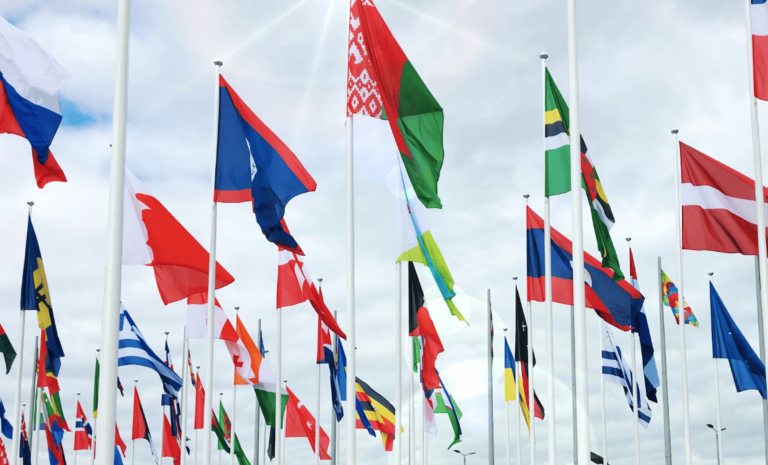Approximately 195 officially recognized countries can be found around the world. The settlement of some of these countries dates back thousands of years. Other nations, however, were founded more recently. This article takes a closer look at the youngest countries in the world.
Table of Contents
South Sudan: 2011
South Sudan is located in the central region of East Africa, where it covers a total area of 239,285 square miles and has a population of 12.23 million.
This country was officially established on July 9, 2011, when it was ceded by the country of Sudan after decades of conflict between the two nations.
Despite this formal independence, Southern Sudan continues to be in conflict with Sudan over the ownership of some oil reserves.
Kosovo: 2008
Kosovo is located in the Balkan Peninsula of Europe, where it covers a total area of 4,212 square miles and has a population of over 1.9 million. This country claimed its independence in February 2008 from Serbia, although this claim has been contested and is only officially recognized by 110 of the 193 members of the United Nations.
Kosovo was considered a separate political region throughout history and under the Ottoman Empire. When that empire fell in 1913, however, Kosovo was divided between Montenegro and Serbia. After World War I, all these countries were part of Yugoslavia, which existed until 1992.
Under Yugoslavia, Kosovo was considered an autonomous region. Since its declaration of independence, this country has become a member of the World Bank and the International Monetary Fund.
Montenegro: 2006
Montenegro is located in the Balkan Peninsula of Southeastern Europe, where it covers a total area of 5,333 square miles and has a population size of 678,931. After the dissolution of Yugoslavia in 1992, Montenegro joined Serbia to form the Federal Republic of Yugoslavia, which was denied recognition by the United Nations.
In 2003, this republic changed its name to Serbia and Montenegro. Montenegro has separated from Serbia since the referendum on May 23, 2006, when just over 55% of the population voted in favor of independence.
This country officially declared its independence on June 3rd of the same year and was officially recognized by the European Union and the permanent members of the United Nations.
Serbia: 2006
Serbia is located between the regions of Central and Southeastern Europe, where it covers a total area of 29,913 square miles. Its total territory size is, however, in question because Serbia does not recognize Kosovo’s independence. Including Kosovo as part of Serbia increases its area to 34,116 square miles.
Serbia, excluding Kosovo, has a population of just over 7 million individuals. This country was once part of Yugoslavia until that political entity was dissolved in 1992. After the separation of Yugoslavia, Serbia joined Montenegro to form a single political region.
This region was first called the Federal Republic of Yugoslavia, a name that was denied recognition by the United Nations, and later became known as Serbia and Montenegro. The two countries officially separated on June 3, 2006, after Montenegro voted for its independence.
East Timor: 2002
East Timor is located in the Maritime Southeast Asia region, where it covers an area of 5,400 square miles and has a population of 1,167 million. This country has a long history of colonization and occupation by other nations. Between 1500 and 1975, for example, East Timor was administered as a colony of Portugal.
Just a week and a half after fighting for and gaining independence, Indonesia invaded the country and claimed it as an additional province. It wasn’t until May 20, 2002 that East Timor gained its independence once again.
Palau: 1994
Palau is located in the Pacific Ocean, where it is made up of a total of 340 islands and covers an area of 177 square miles. Furthermore, this country has a population size of 21,503. During the era of European exploration and colonization in the 16th century, Palau came under the control of Spain.
This occupation lasted until 1899 when Imperial Germany purchased the territory and named it German New Guinea. Japan took control of the area during World War I until 1947, when the United States began administering the region as part of the Trust Territory of the Pacific Islands.
In 1979, many of these territories united to form the Federated States of Micronesia. Palau, however, chose to become independent, a move that became official in 1994.
Eritrea: 1993
Eritrea is located in the northern region of the Horn of Africa and has a population of 4,954 million. This country officially became independent in April of 1993 after being part of the Federation of Ethiopia and Eritrea for about 46 years.
Before belonging to this federation, Eritrea was governed by the Kingdom of Italy and known as Italian Eritrea. During World War II, however, Britain took control of the area until December of 1950, when Emperor Haile Selassie convinced the United States and the UN of Ethiopia’s claim to the territory.
Eritrea fought the war of independence for 30 years, between 1961 and 1991.
Czech Republic: 1993
The Czech Republic is located in Central Europe, where it covers a total area of 30,450 square miles and has a population of approximately 10.61 million.
The Czech Republic became independent on January 1, 1993, when Czechoslovakia was divided into two new countries after the collapse of the Soviet-led government here.
Today the Czech Republic belongs to the UN, the European Union, the Organization for Economic Co-operation and Development and the North Atlantic Treaty Organization.
Slovakia: 1993
Slovakia is located in Central Europe and shares a border with the Czech Republic. It covers a total area of 18,933 square miles and has a population of over 5.43 million.
Already in the 12th century AD, present-day Slovakia was part of the Kingdom of Hungary and later of Austria-Hungary.
After World War I, this empire was dissolved. In response, people from the Slovak and Czech ethnic groups united to form the nation of Czechoslovakia, which was later disbanded after the end of communist rule. On January 10, 1, Slovakia became an officially independent nation.












